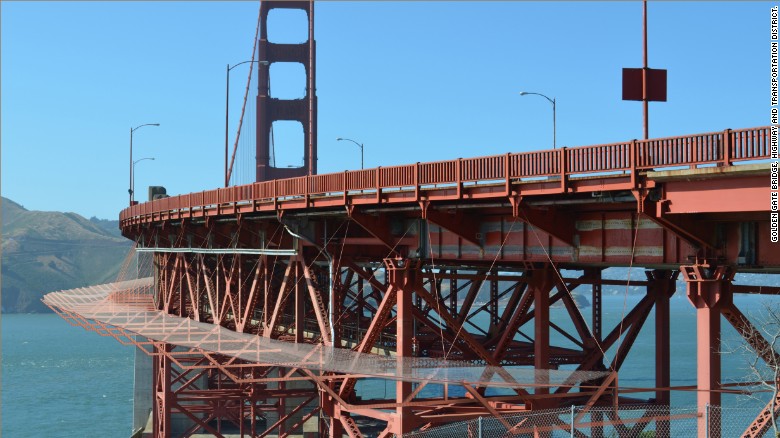There’s a big gap between the amount of time/money/effort we wish organizations poured into mental health resources and initiatives, and the amount they actually do. A big part of California is hoping to bridge that gap with a net under an awfully literal bridge.
Last month, construction of a “suicide net” for the Golden Gate Bridge began. Each side will have a stainless steel net along its length designed to catch jumpers. They’re likely to survive with injuries, be unable to climb out of the net due to its slope, and get pulled out by a “retrieval device.”
It’ll take about four years to finish and cost about $211 million dollars. Don’t misunderstand: I’m happy that our North American governments are finally willing to make such big investments in protecting people with suicidal or self-destructive thoughts.
I’m just confused. Yes, the Golden Gate is one of the biggest suicide spots worldwide — not a moniker I take lightly. And yes, some studies reportedly claim that bridge barriers as a whole are effective deterrents.
But there are so many better ways to use four years and $211 million to help people before it gets this far. This may be a problem across the border, but it raises questions that are universally relevant.
Couldn’t that money fund research into depression and other mental illnesses? Or psychotherapeutic/psychiatric counselling services? What about advertising mental health services so that people know where to go to find aid in the first place, a surprisingly big barrier? Or, just anything that actually acknowledges and addresses the underlying problem — the mindsets and circumstances that lead to suicide?
All of these questions boil down to one. Why are we still so tied up in the physical act of suicide that it doesn’t occur to anyone that fixing the things leading up to it would be a more respectful and probably more effective preventative measure?
It’s not like California has been particularly on top of mental health. Even if the suicide rate in 2010 was lower than the national average, data from that time shows that about 50% of adults and roughly 65% of adolescents with significant mental health needs didn’t get proper counselling or otherwise have those needs met. That’s something to work on.
While studies performed at the Golden Gate and places like Washington, DC and Auckland, New Zealand support the view that barriers reduce suicides, there are plenty of studies, such as at Toronto’s Bloor Street Viaduct, that contradict this view.
Many of the pro-barrier studies have issues, too — Auckland had inconsistent results about whether or not a barrier changed suicide results, with different outcomes in different years. The DC study included a very small sample size when testing whether precluded jumpers at the Duke Ellington Memorial Bridge would try to jump from one other nearby bridge, without checking whether the overall suicide rate in the city had changed.
Though bridge barriers theoretically help keep people alive long enough to increase the odds of getting them professional aid, they don’t promote this outcome inherently more so than any other prevention method would. Instead, we should be focussing more on getting people help from the beginning.
It’s so, so easy to smile, cut a ribbon, and talk to the public about saving lives, the way figures like Senator Dianne Feinstein and even Nancy Pelosi have done. What we need to do is care about the long-term quality of those lives.

